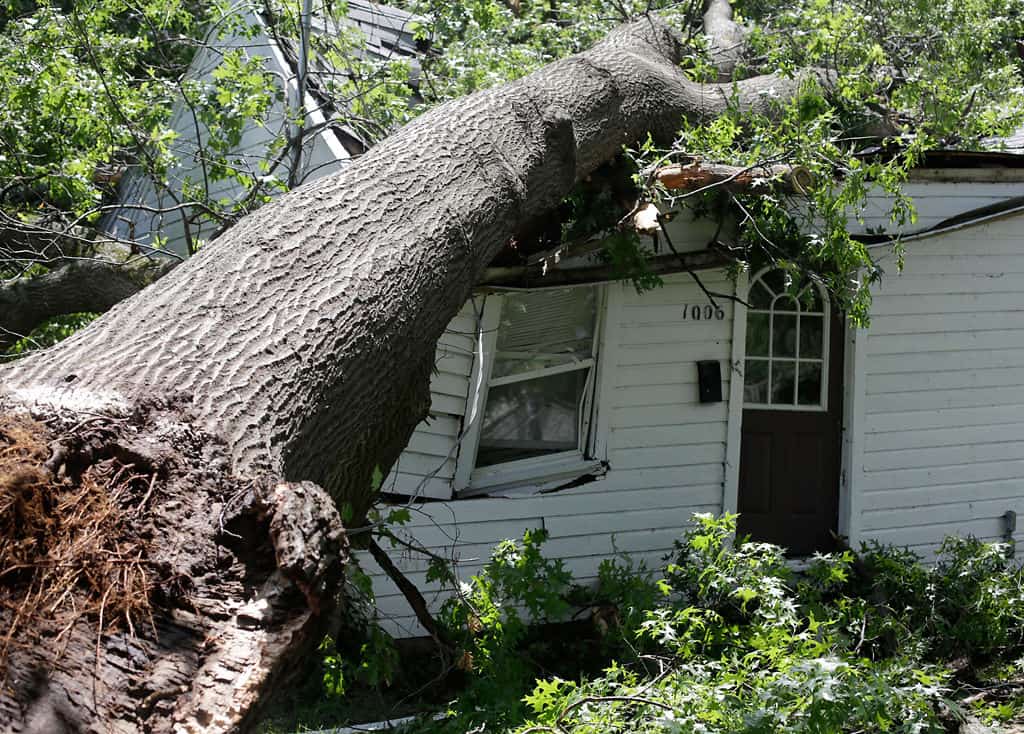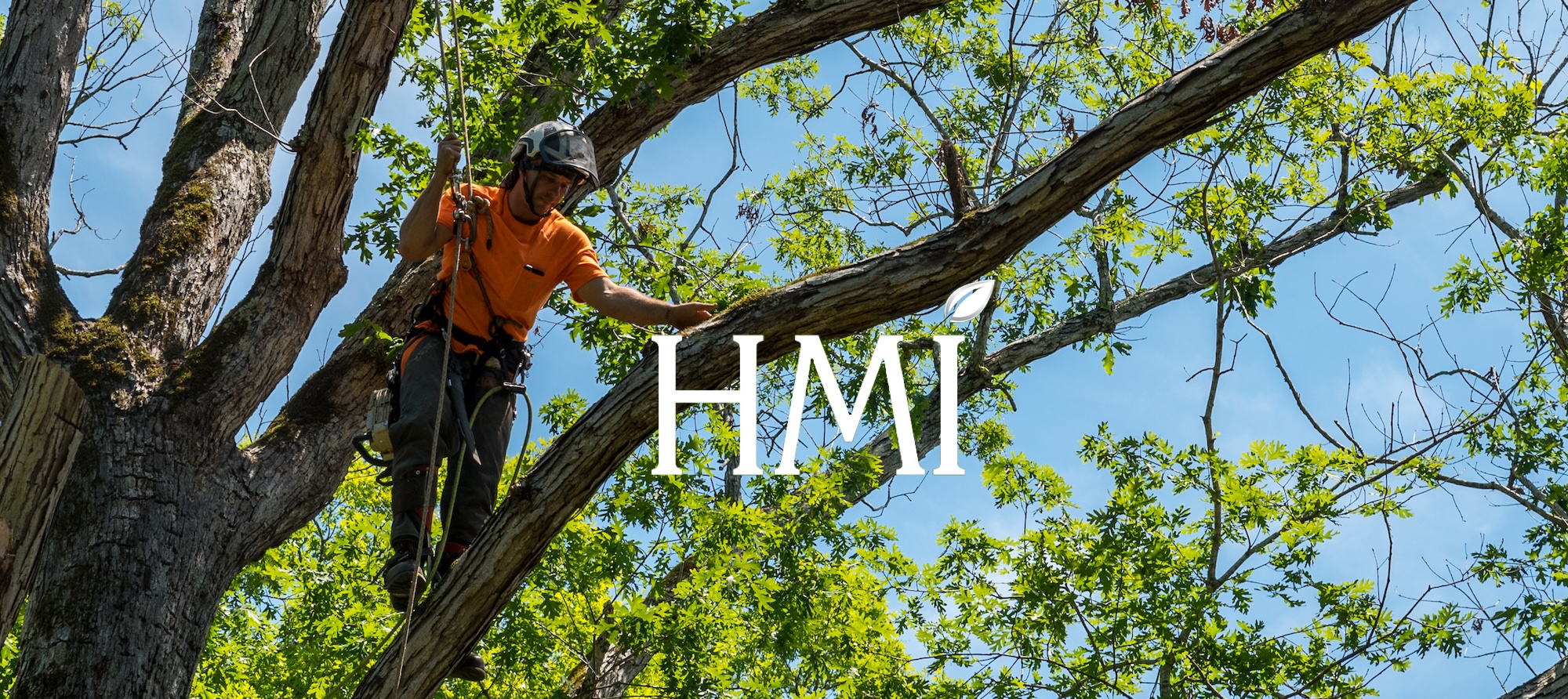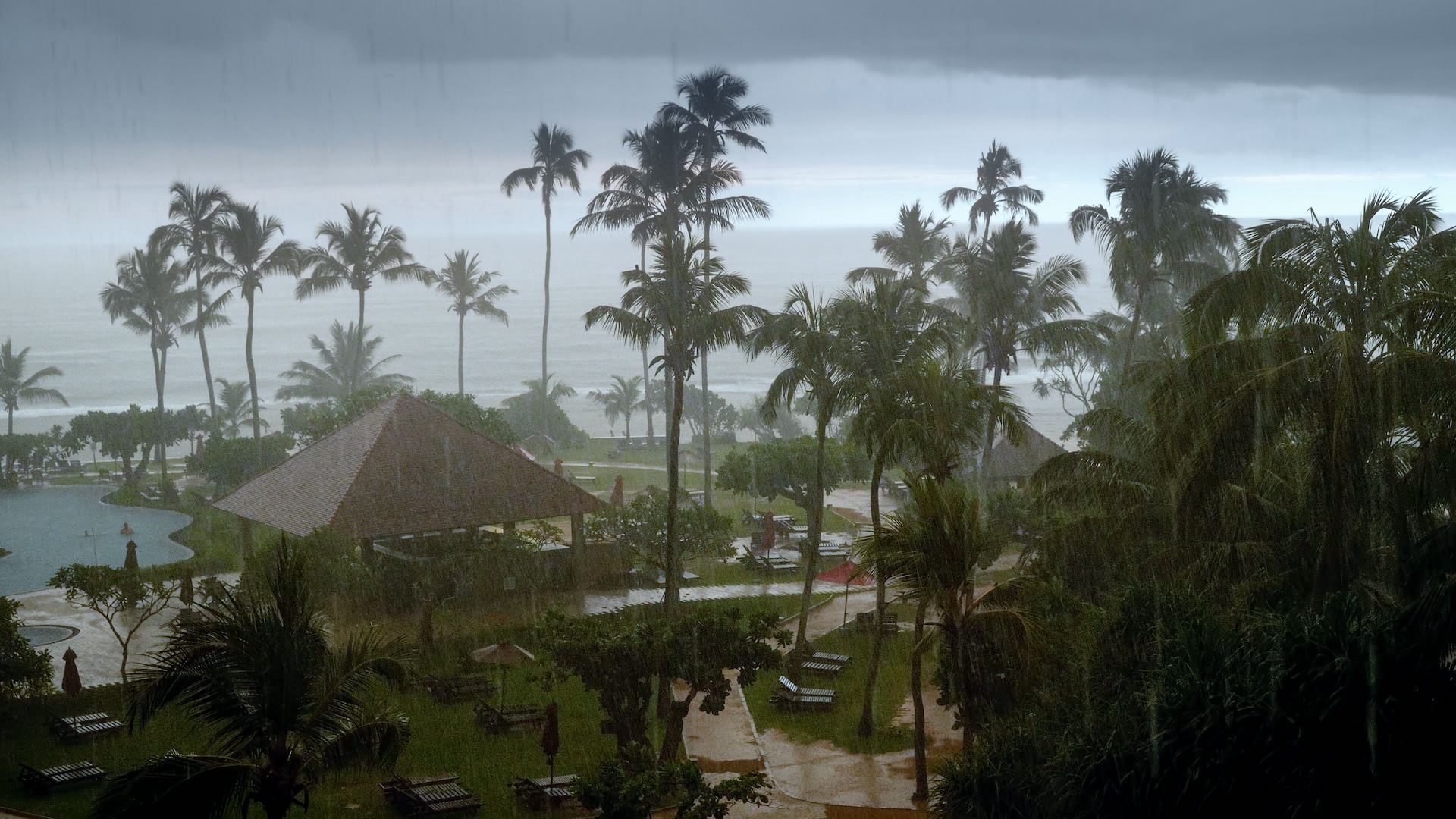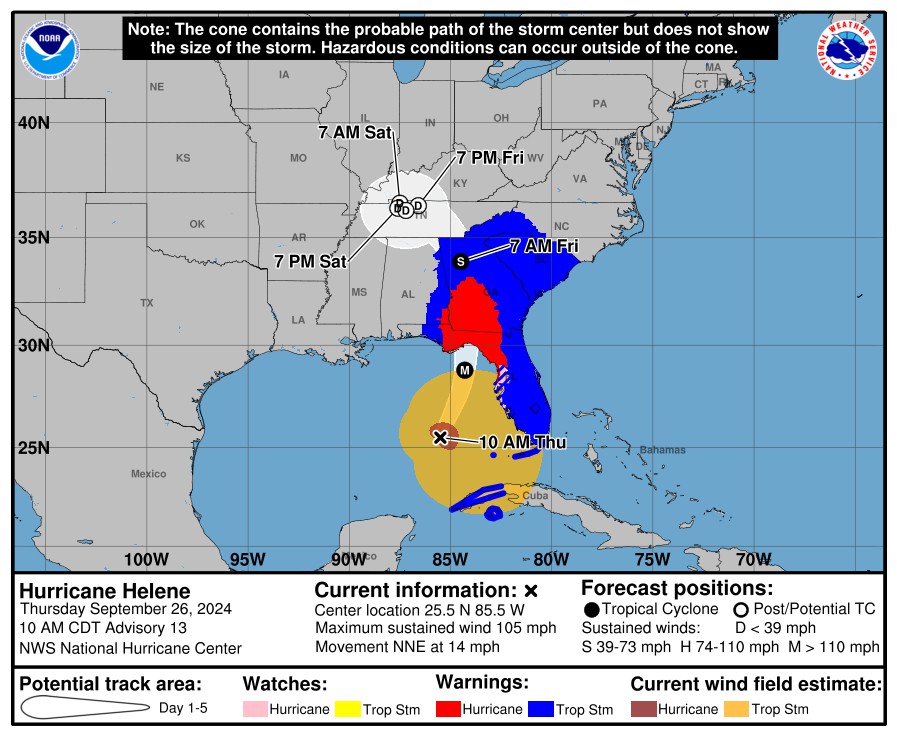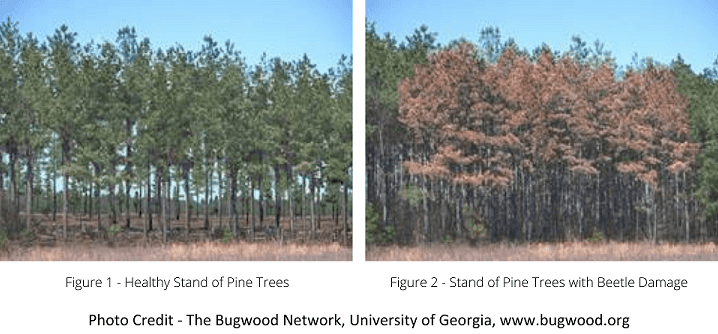By Kevin Myers, CTSP
When it comes to cleaning up after a big storm, arborist crews generally must be ready for anything. Any given service territory comes with its own unique weather patterns and predictions, but dealing with the unexpected should always be a part of the game plan.
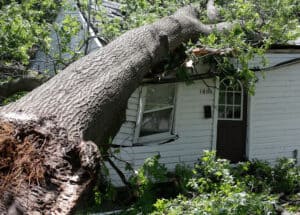 If your tree crews are working with utility companies, storm preparedness is especially important. Aside from worker and public safety, restoring power to customers is a top priority, and sending restoration workers – including arborists – to deal with fallen trees and large debris is part of that process. Outages cost utilities somewhere between $18 billion to $33 billion annually, according to the U.S. Department of Energy’s Office of Electricity Delivery and Energy Reliability, so getting systems back up and running as soon as possible is an essential part of a utility’s immediate response to weather-related outages.
If your tree crews are working with utility companies, storm preparedness is especially important. Aside from worker and public safety, restoring power to customers is a top priority, and sending restoration workers – including arborists – to deal with fallen trees and large debris is part of that process. Outages cost utilities somewhere between $18 billion to $33 billion annually, according to the U.S. Department of Energy’s Office of Electricity Delivery and Energy Reliability, so getting systems back up and running as soon as possible is an essential part of a utility’s immediate response to weather-related outages.
With that in mind, a preparedness plan is critical. Safety and utility tree work have always gone hand in hand, but the stakes are that much higher when it comes to storm preparedness and recovery. So what does a good storm response and preparedness plan look like? And what kind of knowledge should arborists be equipped with when it comes to navigating severe weather in the field? Let’s take a look at some of the essentials of a storm preparedness program, as well as some of the types of extreme weather that field crews may have to deal with under extraordinary circumstances.
The Golden Rule of storm readiness
One of the most effective tips when responding to storm damage is a simple one, but it might not always be the first one you think of. It’s not training. It’s not technique. And it’s not having the right tools for the job. Those things are all critically important, of course, but the Golden Rule of storm readiness is this: Rest.
Think about it. When dealing with storm response and cleanup, hazards are far more plentiful than when performing other work under ordinary weather circumstances. The last thing any tree company wants is an exhausted crew out in the field, under-rested and over-stressed.
One common practice among Southern U.S. utility providers when dealing with the effects of hurricanes or tropical storms is to send responding crews home for a certain period of time before deploying them. The effect here is twofold: allowing workers to check in on their homes and families in the wake of a storm, and letting them get enough rest before going into the field so they can then focus on the work that must be completed. Some companies practice the “eight-hours-on, eight-hours-off” rule during protracted periods of storm restoration work, in order to ensure that all crews are rested throughout.
That particular method might not be feasible for every company under all circumstances. But it’s important nevertheless to remember that a well-rested tree crew is far more likely to work safe and stay safe when working under more dangerous, storm-related circumstances.
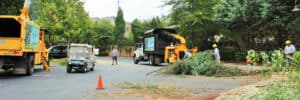
Safety by storm type
The most obvious cause of power outages and needed tree-cleanup work tends to be large thunder-and-lightning storms. But the truth is there are many more dangerous weather patterns occurring throughout the United States that all tree crews should be familiar with.It’s also true that when working in the wake of foul weather, more may be on the way – and tree crews must be prepared.
With that in mind, let’s look at some essential field safety tips if you happen to find yourself contending with Mother Nature unexpectedly.
Lightning
Lightning strikes are one of the most dangerous aspects of a major thunderstorm and can occur up to 10 miles away from a storm itself. That means if you can hear thunder, there’s a lightning risk, regardless of whether skies appear clear and the sun is shining. This is one of the most important things to remember when working during a storm’s aftermath.
Warning signs include thunder claps, visible storm clouds and, of course, the telltale bright fl ashes of light in the sky. The most obvious way to stay safe if lightning abounds is to stay sheltered, but if you happen to find yourself in the field absent of any other form of shelter, returning to your vehicle is the safest bet.
Blizzards
During the winter months, thunderstorms turn to snowstorms and can lead to dangerous conditions in the field for tree crews.
Some overhanging branches that may not appear to pose a threat under ordinary circumstances may transform into hazards due to excess weight from heavy snowfall. Tree crews must take this excess weight into account when working around trees, which may also cause otherwise benign branches to fall onto power lines.
And while the snow itself won’t hurt you, blizzard conditions can pose serious hazards when driving your vehicle in the field. Ensure an emergency kit is always stocked in work vehicles, along with blankets, extra clothing, flashlights, tow ropes, booster cables and distress flares.
Tornadoes
Tornadoes can appear faster than we might think. Their season is generally accepted as March through June, though tornadoes have been documented in all months. Know the warning signs: dark or green-colored skies; large, dark, low-lying clouds; and a persistently rotating cloud base.
Seeking underground shelter should be your first priority, but if you find yourself in a situation where this is impossible, seek low ground away from large objects or debris. This includes your vehicle, as well as other reasonably safe infrastructure. These objects can be obliterated by tornado-force winds, and the further your body is from them, the safer you are.
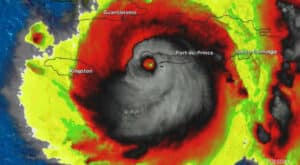
Hurricanes
The biggest hazard in a hurricane isn’t necessarily the storm itself but the flying debris that these violent storms can kick up. While weather monitoring in states where hurricanes are frequent tends to be comprehensive – and no one is sending out tree crews as a hurricane approaches – it’s still worthwhile to be able to identify the signs and know the safety measures.
Indicators of a hurricane include increases in wind speed, heavy escalating rains and raised ocean levels. Finding indoor shelter is the best way to stay safe, ideally with power to the structure turned off. And while the weather may appear to calm during the middle of the storm, it can get far worse very quickly.
Additional weather hazards
Storms themselves aren’t the only natural hazard to watch out for in the field. Below are some additional things to stay prepared to encounter.
Flooding
Flooding is, in fact, one of the extreme weather events with the most fatalities, and can result as an aftereffect of major storms or prolonged heavy rains. An average of 81 people die each year as a result of flooding, according to statistics compiled by the National Weather Service.
Why such a high rate? It’s easy to underestimate the threat of even light flooding. Consider that it takes just six inches of fl owing water to sweep someone off their feet. A flood fl owing at two feet deep can sweep away most vehicles.
When in the field, heavy rainfall is your first sign of a flood, but also keep an eye out for flowing water on normally dry land and rapidly rising water levels. If a flood is oncoming, avoid dips and valleys and get to higher ground as quickly as possible. Don’t attempt to cross fl owing streams. And perhaps most important, don’t attempt to drive through a flooded road, which can easily lead to a stalled vehicle and a dangerous situation for the driver.
Earthquakes
It’s estimated that about half-a-million earthquakes occur around the world each year. While severity varies, Hazards abound when clearing storm-damaged trees. Overhanging branches that may not appear to pose a threat under ordinary circumstances may transform into hazards due to excess weight from heavy snowfalls. they can certainly pose a significant threat to outdoor crews. Earthquakes are not indicated by obvious visual signs such as dark clouds, but one tell tale sign is unusual changes in animal behavior. Wildlife can pick up on tremors and changes in electrical fields more so than humans.
If you find yourself caught in an earthquake, seek shelter under a stable object and grab onto something while the worst of the quake passes.
Landslides
Take notice when driving along embankments, which are particularly susceptible to landslides. Road signs will often be posted, but it’s important for you to know what to look for, as well.
Take note of cracking tree sounds, boulders knocking together and other sounds that can indicate a rush of moving debris. Vacate the area immediately if you believe a landslide is oncoming. Flowing water changing from clear to muddy can be another indicator – landslides occur more commonly in river valleys and low-lying areas.
Conclusion
There is much more to comprehensive storm-preparedness planning – communicating cleanup plans to customers, equipment preparation, proactive vegetation management for utilities, monitoring and reporting and more – but one of the most important for everyday arborists is being able to identify some of the most threatening natural conditions that we face in the field.
Storms and hazardous conditions are simply part of the business for tree care workers. And it’s our responsibility to be able to work smart and work safe.

